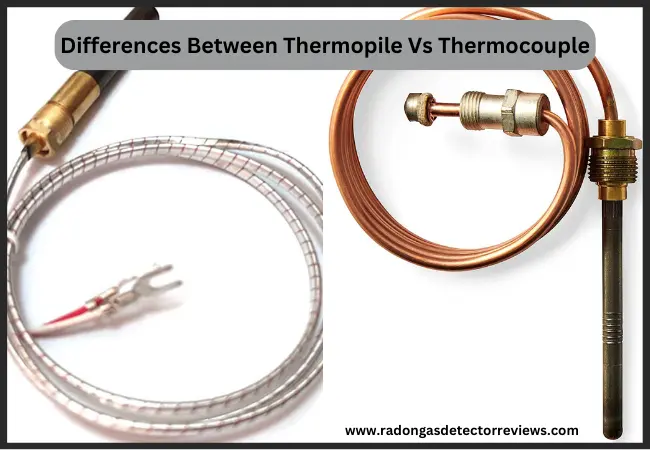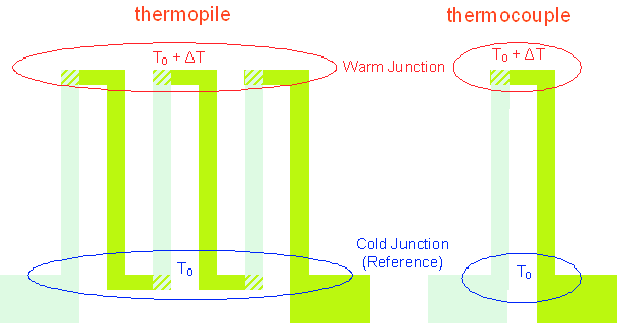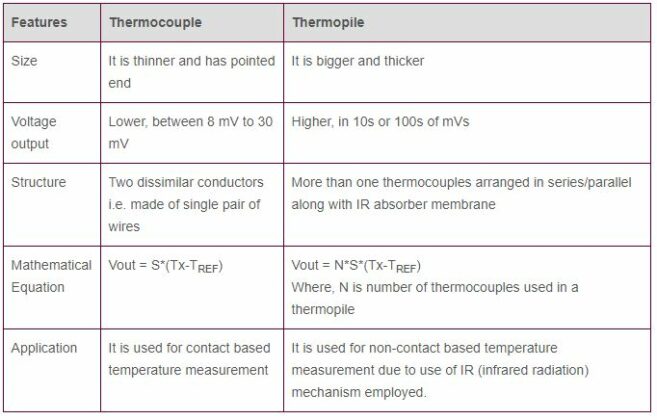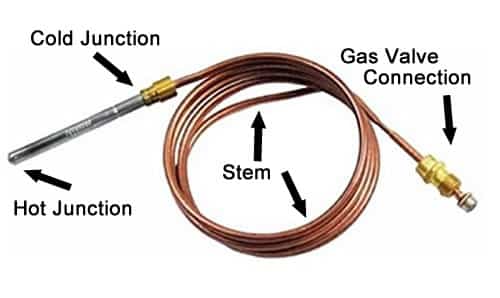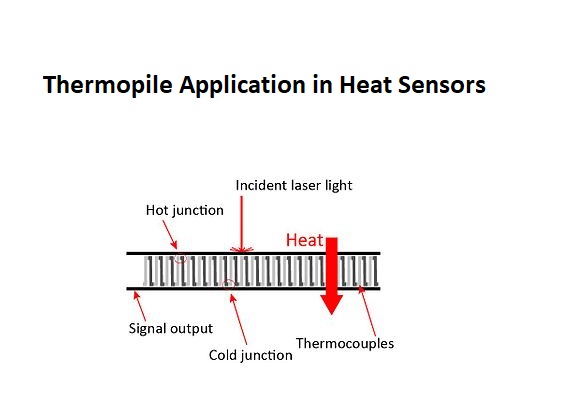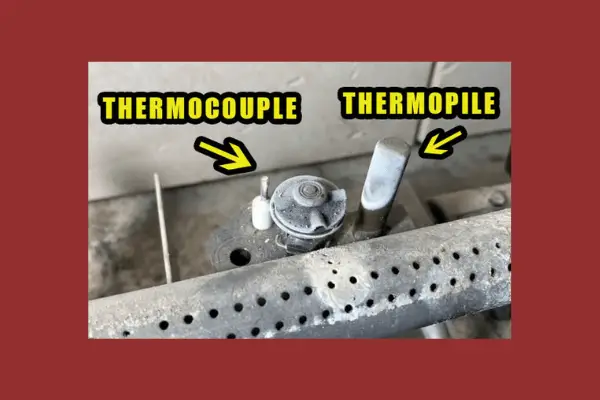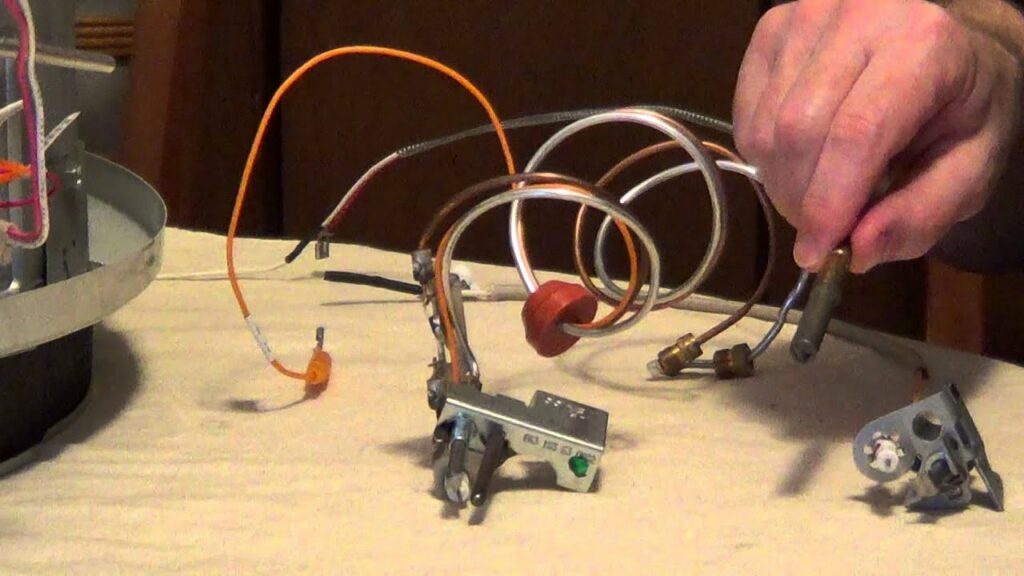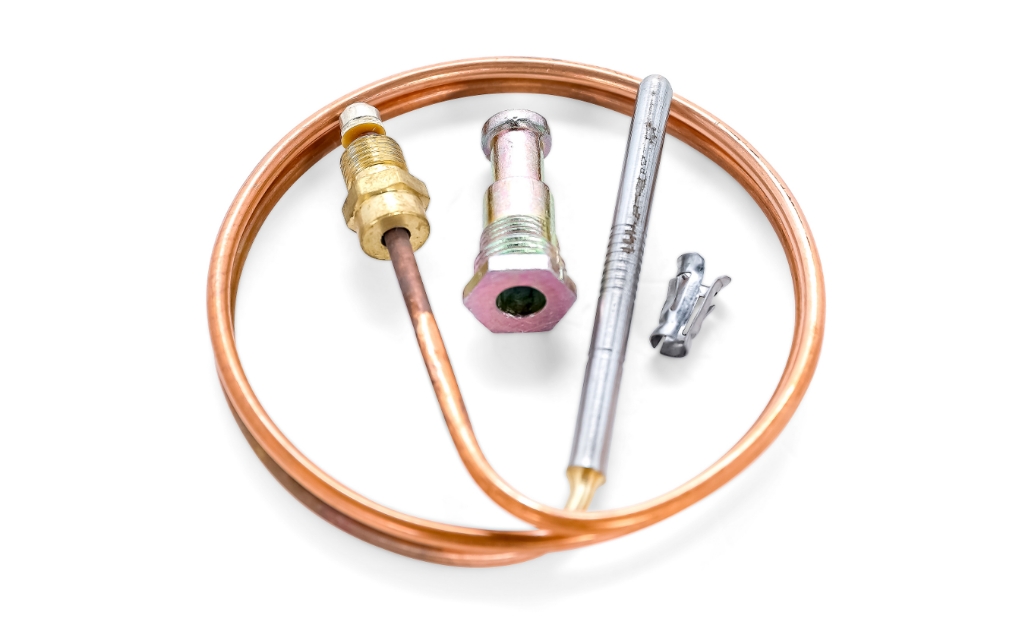Difference Between A Thermocouple And A Thermopile

Thermocouple vs. Thermopile: Understanding These HVAC Sensors for Energy Savings
In the quest for a more energy-efficient home or business, understanding the inner workings of your HVAC system is crucial. Two key components you might encounter are thermocouples and thermopiles. Both are temperature sensors, but they operate differently and have distinct applications within HVAC systems. Knowing the difference can help you make informed decisions about upgrades, repairs, and smart home integrations, ultimately leading to lower energy bills and a smaller carbon footprint.
What is a Thermocouple?
A thermocouple is a simple temperature sensor made from two dissimilar metal wires joined at one end, creating a junction. This junction is where the temperature is measured. The principle behind its operation is the Seebeck effect: When the junction is heated or cooled, it creates a voltage that's proportional to the temperature difference between the junction and another point in the circuit (the reference junction).
Think of it like this: two different metals react differently to heat. This difference in reaction creates a tiny electrical push (voltage) that can be measured and correlated to a specific temperature. Thermocouples are known for:
- Simplicity: Relatively inexpensive and easy to manufacture.
- Wide Temperature Range: Can measure temperatures from very low (cryogenic) to extremely high (over 2000°C, depending on the metal types).
- Durability: Rugged and can withstand harsh environments.
- Fast Response Time: React quickly to temperature changes.
However, thermocouples also have some drawbacks:
- Low Voltage Output: The voltage generated is very small, often requiring amplification for accurate readings.
- Accuracy Issues: Susceptible to errors due to variations in the materials and the need for cold junction compensation (accounting for the temperature of the reference junction).
In HVAC systems, thermocouples are commonly found in:
- Flame Sensors: Detecting the presence of a flame in furnaces and water heaters. If the flame goes out, the thermocouple signal drops, and the gas valve shuts off for safety. This is a critical safety feature.
- High-Temperature Limit Switches: Monitoring furnace temperatures to prevent overheating.
What is a Thermopile?
A thermopile is essentially a series of connected thermocouples. Instead of just one junction, a thermopile has multiple junctions arranged to amplify the voltage output. By connecting multiple thermocouples in series, the small voltage generated by each individual thermocouple adds up, resulting in a significantly larger and more easily measurable voltage.
This amplified voltage output makes thermopiles more suitable for applications where greater sensitivity and accuracy are required. The key advantages of thermopiles include:
- Higher Voltage Output: Easier to measure and process the signal without significant amplification.
- Improved Sensitivity: More responsive to small temperature changes.
- Accuracy: Because of the amplified signal, they are often more accurate than individual thermocouples in certain applications.
However, thermopiles also come with some considerations:
- Cost: Generally more expensive than single thermocouples due to their more complex construction.
- Slower Response Time: Can be slightly slower to respond to rapid temperature changes compared to some thermocouples.
Thermopiles are commonly used in HVAC systems for:
- Pilot Light Sensors: Similar to thermocouples in flame sensing, but providing a stronger signal for more reliable operation.
- Infrared (IR) Thermometers: Measuring the temperature of surfaces without direct contact, allowing for remote temperature monitoring. This can be used to diagnose issues with ductwork, identify drafts, and assess the efficiency of insulation.
- Radiant Heating Controls: Precisely controlling the temperature of radiant heating systems, such as radiant floor heating.
Thermocouple vs. Thermopile: Key Differences Summarized
Here's a table summarizing the key differences between thermocouples and thermopiles:
| Feature | Thermocouple | Thermopile |
|---|---|---|
| Number of Junctions | One | Multiple (Series Connection) |
| Voltage Output | Low | High |
| Sensitivity | Lower | Higher |
| Accuracy | Can be lower without proper compensation | Potentially higher due to amplified signal |
| Cost | Lower | Higher |
| Response Time | Faster | Can be slightly slower |
| Common Applications | Flame sensors, High-temperature limit switches | Pilot light sensors, IR thermometers, Radiant heating controls |
The Role in Energy Efficiency and Smart HVAC Systems
Both thermocouples and thermopiles play a crucial role in ensuring the efficient and safe operation of your HVAC system. Their ability to accurately sense temperature allows for precise control, which translates to energy savings.
Here's how they contribute to energy efficiency:
- Precise Temperature Control: By accurately sensing temperature, these sensors allow thermostats and HVAC controllers to maintain a consistent and comfortable indoor environment without overshooting or undershooting the target temperature. This prevents wasted energy.
- Flame Safety: Thermocouples and thermopiles in flame sensors ensure that gas-burning appliances operate safely. By quickly shutting off the gas supply if the flame goes out, they prevent gas leaks and potential explosions. A properly functioning flame sensor is a critical safety component that also ensures efficient combustion.
- Diagnosing Inefficiencies: Thermopiles used in IR thermometers can help identify areas of energy loss in your home or business. For example, you can use an IR thermometer to detect air leaks around windows and doors or to assess the insulation performance of your walls and ceiling. This information can help you target energy-saving improvements.
- Optimizing Radiant Heating: Thermopiles in radiant heating systems allow for precise control of the floor temperature, ensuring even and efficient heating throughout the space.
In the realm of smart home technology, these sensors are becoming even more important. Smart thermostats, for example, often incorporate advanced temperature sensing capabilities using thermopiles to provide more accurate and responsive temperature control. They can also be integrated with other smart home devices, such as occupancy sensors, to automatically adjust the temperature based on whether or not someone is present in the room. This intelligent control can lead to significant energy savings.
Consider these scenarios:
- Smart Thermostat Integration: A smart thermostat utilizing thermopile technology can learn your heating and cooling patterns and automatically adjust the temperature to optimize energy efficiency. According to Energy Star, a smart thermostat can save you up to 8% on your heating and cooling costs, which translates to roughly $180 per year.
- Remote Monitoring: Smart HVAC systems with remote monitoring capabilities can alert you to potential problems with your heating or cooling equipment before they become major issues. For example, if a thermocouple in your furnace starts to fail, the system can send you a notification, allowing you to schedule a repair before the furnace breaks down completely. This can prevent costly repairs and ensure that your system is always operating at peak efficiency.
Choosing the Right Sensor and Understanding ROI
When upgrading or repairing your HVAC system, it's essential to understand the role of thermocouples and thermopiles and to choose the right sensor for the application. Here are some considerations:
- Application: For simple flame sensing applications, a thermocouple may be sufficient. For more demanding applications requiring higher accuracy and sensitivity, a thermopile is often the better choice.
- Budget: Thermocouples are generally more affordable, while thermopiles offer enhanced performance at a higher price.
- Integration with Smart Home Systems: If you plan to integrate your HVAC system with a smart home system, look for thermostats and controllers that utilize advanced temperature sensing technology, such as thermopiles.
To calculate the ROI of upgrading to a more efficient HVAC system with advanced temperature sensing, consider the following factors:
- Energy Savings: Estimate the annual energy savings based on the system's efficiency rating (e.g., SEER for air conditioners, AFUE for furnaces) and your local energy costs.
- Rebates and Incentives: Check for available rebates and incentives from your utility company or government agencies, such as those offered through the Inflation Reduction Act. These rebates can significantly reduce the upfront cost of upgrading to a more efficient system.
- Maintenance Costs: Factor in the potential for lower maintenance costs due to the improved reliability of a newer, more efficient system.
For example, upgrading from an old furnace with an AFUE of 80% to a new high-efficiency furnace with an AFUE of 95% could save you up to 15% on your heating bills. Assuming your annual heating bill is $1,000, this translates to $150 in annual savings. Over the lifespan of the furnace (typically 15-20 years), this can add up to a significant amount of money. Combined with available rebates and incentives, the ROI of upgrading to a more efficient furnace can be quite attractive.
Working with HVAC Professionals
When it comes to thermocouples, thermopiles, and your overall HVAC system, consulting with a qualified HVAC contractor is highly recommended. A professional can help you:
- Diagnose issues: Accurately identify any problems with your existing temperature sensors or other HVAC components.
- Recommend the right solutions: Suggest the best type of sensor or system upgrade based on your specific needs and budget.
- Install and maintain equipment: Ensure that your HVAC system is properly installed and maintained for optimal performance and energy efficiency.
By understanding the differences between thermocouples and thermopiles and by working with a qualified HVAC professional, you can make informed decisions that will improve the efficiency and comfort of your home or business while saving you money on your energy bills.
